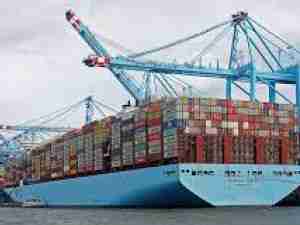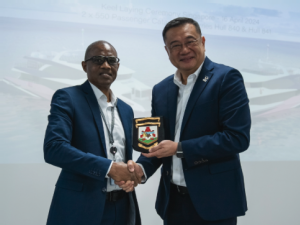At 6.1 million tons, containerized cargo at Port Everglades increased by 6.5% during FY2007. teus (20-foot equivalent units, which is the standard measurement for containers) increased by 9.8% during the same time period to reach 948,680 teus. This growth was generated by new shipping services to several of the Port's existing marine terminal operators.
'Our goal is to exceed one-million teus this year,' says Port Everglades Director Phillip C. Allen. 'With the addition this month of new shipping services Antillean Marine and CMA-CGM, we fully expect to reach and exceed the one-million teu mark before this time next year.'
Cruise passenger numbers were also higher in FY2007, with 3.4 million embarking and disembarking passengers, which is a 5.3% increase over the prior year. The highest growth was in multi-day cruises, which increased by 9.4% with 2.7 million passengers taking cruises that sailed two or more nights. Daily ship passenger counts decreased 7.6% to 719,888 passengers in FY2007. Port officials estimate that the decrease in daily passengers reflect the availability of new landside gaming venues.
Currently, Port Everglades is the world's third busiest cruise homeport behind Port of Miami and Port Canaveral. However, within the next few years, Port Everglades is expected to become the Number One cruise port in the world with the addition of year-round sailings by Royal Caribbean International's Genesis-project ships in 2009 and 2010. At 220,000-gross-registered-tons, RCI's Genesis ships will be the world's largest cruise ships at 5,400 passengers each.
Overall, waterborne commerce decreased slightly by 2.6%. The decrease is reflected by lower volumes of bulk cargoes, used primarily in the construction industry, as there is a current economic downturn in that segment of the industry. Cement suffered the greatest decrease with a 41.9% drop in tonnage to 1.4 million tons.
Petroleum remained steady with a slight decrease of 0.4% and a total of 123 million barrels. For the first time, bio-diesel was one of the petroleum products that contributed to the overall barrel count. More than 486,000 barrels of bio-diesel were received from various domestic and foreign markets through Port Everglades. We are expecting to see a growing trend towards alternative fuels in the future, Allen says.
Total revenue increased by 4.6% from $107.6 million in FY2006 to $112.5 million in FY2007. The Port's cruise, containerized cargo and petroleum business sectors made up approximately 74% of the Port's total revenue, other waterborne commerce including cruise passenger parking generated approximately six%, and land-based commerce such as real estate and Foreign-Trade Zone #25 generated nearly 20%.
The change in net assets grew by 22%, driven in large part by the 51% increase in net income of $14 million before capital contributions. The net income generated by the Port is a revenue source for the planned capital improvements specified in the Port's Master/Vision Plan. It reduces the amount of funds needed by external debt funding and results in overall lower interest costs and reflects a healthy financial position.
Port Director Allen notes that not only did FY2007 represent a strong performance year, but coupled with the recent adoption of a new Master/Vision Plan, it becomes a new foundation for future growth.
As one of South Florida's leading economic engines, Port Everglades is the gateway for international trade and cruise vacations. Port Everglades is one of the busiest cruise ports worldwide. It is among the fastest growing container ports in the United States, according to the PIERS import/export database. And, Port Everglades is South Florida's main seaport for receiving petroleum products including, gasolin










